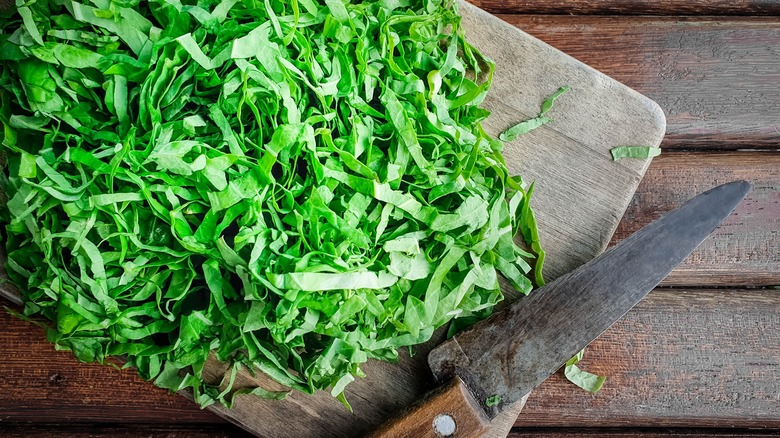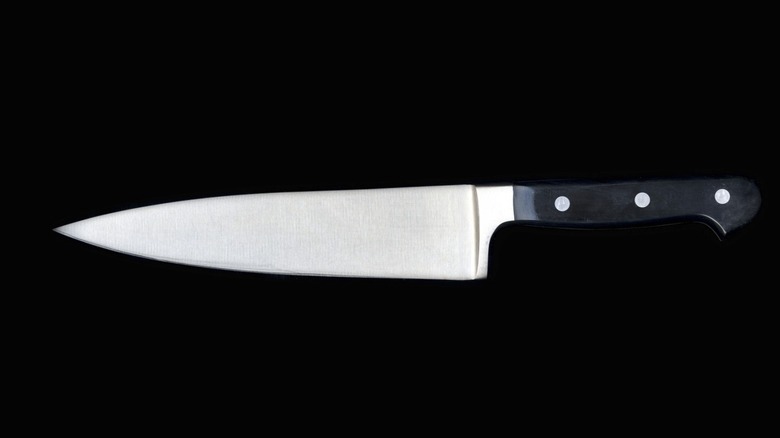The Ideal Type Of Herbs To Chiffonade
Mastering the basics of knife skills is fundamental if you want to become a better cook. Not only will it reduce prep time, but it will also increase precision, making dishes more aesthetically pleasing, and ensuring that food cooks evenly. Unlike most other cuts (chop, dice, brunoise, etc.) that are used for large and hearty vegetables, when it comes to more delicate produce like leafy greens and herbs, chiffonade is the way to go. However, certain herbs work better than others.
According to Escoffier, chiffonade translates from the French word meaning rags — although ribbons more aptly describe the dainty and slender cuts. Beyond obvious aesthetics, the advantages of the method are plentiful. Along with providing a more efficient way to cut leafy herbs, Forks Over Knives explains that chiffonading allows for more aromatic enzymes to be released in contrast to whole or coarsely chopped leaves.
Great as a punchy garnish on just about anything, the chiffonade technique also allows for herbs to be evenly incorporated into a dish, creating improved flavor. The only drawback, as reported by Canadian Living, is that chiffonading causes the herb's edges to darken rapidly, which means herbs should be used quickly thereafter. The big question remains: which herbs are best to use?
Chiffonade broad-leaf herbs
Not all herbs are created equal. Generally, aromatic plants are categorized as soft (leafy and delicate) or woody (sturdy with thick stems). That said, these distinctions can affect how an herb should be cut, used, and even stored.
Consequently, while woody herbs like rosemary and thyme aren't suitable for chiffonading, that doesn't mean that all soft herbs are. According to Food Network, the chiffonade technique works best with soft, broad-leaved herbs like basil, mint, and sage. That means that the irregularly-shaped leaves of parsley wouldn't work as effectively with this method.
Now that you know which herbs are ideal to chiffonade, it's time to learn how to execute the technique. Starting with fresh and fragrant leaves, Williams Sonoma recommends stacking about 6 leaves into a pile and rolling lengthwise into a tight bundle. With the stem against the cutting board, slice across the bundle with a sharp knife (something versatile like a chef's knife), using a rocking motion. All that's left to do is give the herb ribbons a fluff, and use them immediately.

